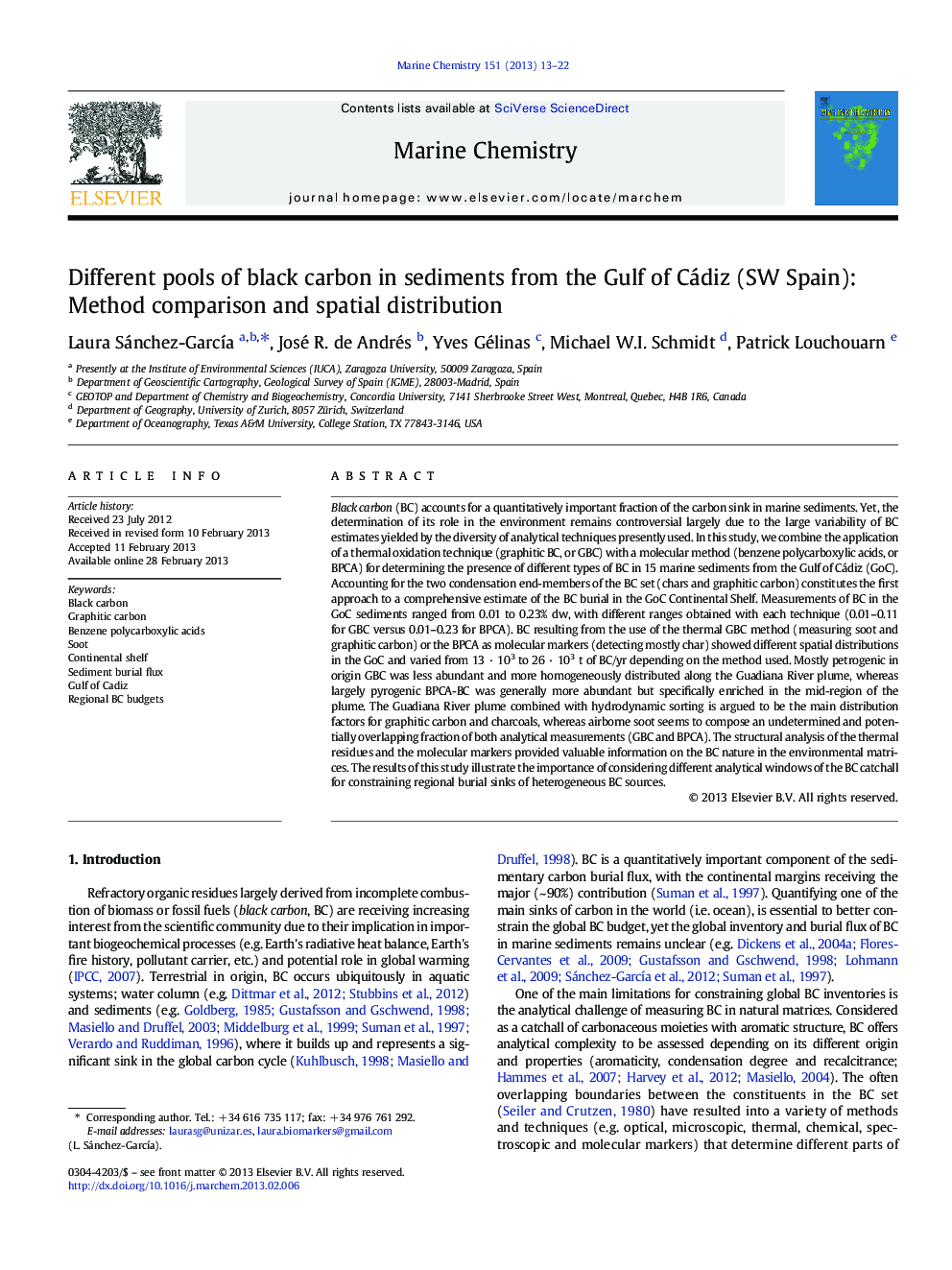| کد مقاله | کد نشریه | سال انتشار | مقاله انگلیسی | نسخه تمام متن |
|---|---|---|---|---|
| 1261513 | 1496684 | 2013 | 10 صفحه PDF | دانلود رایگان |

• We assess the terrestrial input of BC to the Gulf of Cadiz Continental Shelf.
• Bulk (thermal) and molecular (biomarkers) level techniques are combined.
• The relative contribution of two end-members of the BC set is accounted.
• We derive regional burial and sink fluxes of the two measured pools of BC.
• This provides new insights on the origin and nature of the sedimentary BC.
Black carbon (BC) accounts for a quantitatively important fraction of the carbon sink in marine sediments. Yet, the determination of its role in the environment remains controversial largely due to the large variability of BC estimates yielded by the diversity of analytical techniques presently used. In this study, we combine the application of a thermal oxidation technique (graphitic BC, or GBC) with a molecular method (benzene polycarboxylic acids, or BPCA) for determining the presence of different types of BC in 15 marine sediments from the Gulf of Cádiz (GoC). Accounting for the two condensation end-members of the BC set (chars and graphitic carbon) constitutes the first approach to a comprehensive estimate of the BC burial in the GoC Continental Shelf. Measurements of BC in the GoC sediments ranged from 0.01 to 0.23% dw, with different ranges obtained with each technique (0.01–0.11 for GBC versus 0.01–0.23 for BPCA). BC resulting from the use of the thermal GBC method (measuring soot and graphitic carbon) or the BPCA as molecular markers (detecting mostly char) showed different spatial distributions in the GoC and varied from 13 · 103 to 26 · 103 t of BC/yr depending on the method used. Mostly petrogenic in origin GBC was less abundant and more homogeneously distributed along the Guadiana River plume, whereas largely pyrogenic BPCA-BC was generally more abundant but specifically enriched in the mid-region of the plume. The Guadiana River plume combined with hydrodynamic sorting is argued to be the main distribution factors for graphitic carbon and charcoals, whereas airborne soot seems to compose an undetermined and potentially overlapping fraction of both analytical measurements (GBC and BPCA). The structural analysis of the thermal residues and the molecular markers provided valuable information on the BC nature in the environmental matrices. The results of this study illustrate the importance of considering different analytical windows of the BC catchall for constraining regional burial sinks of heterogeneous BC sources.
Journal: Marine Chemistry - Volume 151, 20 April 2013, Pages 13–22